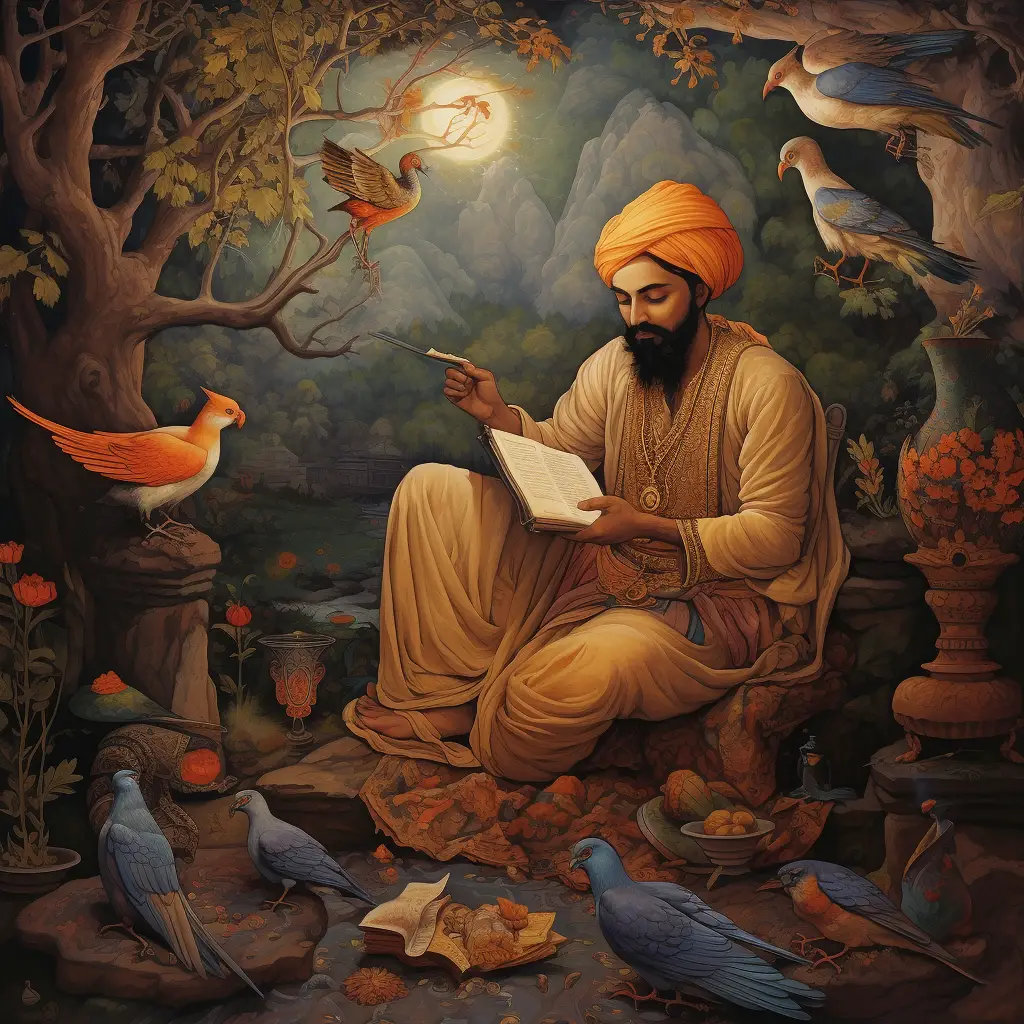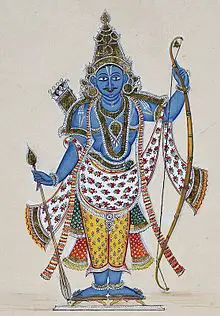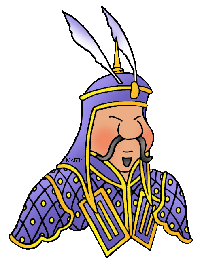Ancient Indian Literature
As you read in the section on art, Ancient India had one of the oldest forms of writing in the world. These pictographs (picture-writing) were most likely used for government business and trade and for marking one’s own property.
Many years later, the Indian people developed an alphabet and a written language called Sanskrit, and began writing literature.
Ancient Indian literature holds a wealth of knowledge about the culture, history, and philosophy of the Indian subcontinent. It encompasses a wide range of genres, including epic poems, religious texts, and philosophical treatises.
Studying these ancient texts can provide valuable insights into the beliefs, values, and traditions of ancient Indian society. Additionally, these literary works have had a significant influence on subsequent Indian literature and continue to be studied and appreciated today.

Ancient Indian Literature Facts for Kids
- “Ramayana” and “Mahabharata” are epic tales from ancient India.
- The “Vedas” are the oldest known Indian texts.
- “Upanishads” are philosophical texts discussing life and death.
- Sanskrit was the primary language of ancient Indian literature.
- “Panchatantra” is a famous collection of animal fables.
- “Rigveda” is the oldest Veda, composed around 1500 BCE.
- “Bhagavad Gita” is a part of the Mahabharata, teaching dharma.
- Kalidasa, a great poet, and playwright, created “Shakuntala.”
- “Aranyakas” bridge the gap between the Vedas and Upanishads.
- “Jataka” tales tell about Buddha’s past lives.
Vedas
Ancient Indian literature is diverse, with the Vedas as a primary work. The Vedas, composed between 1500 and 500 BCE, are the oldest Hindu scriptures. There are four Vedas – Rigveda, Yajurveda, Samaveda, and Atharvaveda, each different in content and purpose. They encompass rituals, ceremonies, and hymns. Originally orally transmitted, they offer insight into the spiritual and daily life of ancient Indians.
Upanishads
The Upanishads are a significant part of ancient Indian literature that was composed between 800 and 200 BCE. They are philosophical texts that explore concepts like truth, knowledge, and the ultimate reality of existence.
These texts marked a significant shift from ritualistic practices to philosophical contemplation in Indian society. Just like a big storybook, they contain many dialogues, stories, and teachings, which were initially passed down orally from teachers to students.
The Upanishads can be seen as early textbooks, helping people to understand complex ideas, and they continue to be highly respected and influential in Indian philosophy and spirituality.
Mahabharata
The Mahabharata is one of the most important pieces of ancient Indian literature and is cherished as a significant source of both cultural and historical information. Composed around 400 BCE to 400 CE, it is a grand epic that tells the story of a great war between two sets of cousins, the Kauravas and the Pandavas.
It is not just a battle story, but also includes teachings about morality, duty, and righteousness. The Mahabharata is also where the Bhagavad Gita, a profound philosophical dialogue between Prince Arjuna and Lord Krishna, is found.
This epic is not only a cornerstone of Indian literature but also provides a deep understanding of ancient Indian society, its beliefs, and its values. It is often used to teach children about courage, loyalty, and the consequences of choices.
Ramayana
Ancient Indian literature is not only fascinating but also very educational. One of the most famous works of ancient Indian literature is the Ramayana, an epic tale that kids may find exciting to learn. The Ramayana was written by the sage Valmiki and is about 24,000 verses long. It tells the story of Prince Rama who goes on a journey to rescue his wife, Sita, from the demon king Ravana.
This epic tale teaches kids about the importance of virtues like loyalty, courage, and the power of good over evil. It’s a wonderful way to introduce children to the rich and diverse culture of ancient India.
Puranas
The Puranas are an important part of ancient Indian literature that is designed to teach important lessons and traditions. They are a collection of ancient texts that contain stories about the history of the universe from creation to destruction, genealogies of kings, heroes, sages, and demigods, and descriptions of Hindu cosmology, philosophy, and geography.
There are 18 main Puranas, each dedicated to different gods and goddesses such as Lord Vishnu, Lord Shiva, and Goddess Devi. These texts were written in Sanskrit and have been passed down through generations, often being read or recited during religious ceremonies and festivals.
They are highly respected for their spiritual and philosophical teachings, making them a significant part of Indian culture and tradition.
Jataka Tales
Ancient Indian literature is a fascinating world of stories, wisdom, and cultural treasures, and one of its most engaging parts for kids is the collection of stories known as Jataka Tales. These tales date back to the 3rd century B.C. and are said to have been told by Lord Buddha himself.
What makes them interesting is that they are not just entertaining stories, but also moral lessons that teach virtues like honesty, bravery, wisdom, and kindness. They often feature animals as main characters, making them engaging and relatable for kids.
The Jataka Tales have been an important part of Indian literature and culture, and even today they are popular among children, continuing to inspire and teach them important life values.
Sanskrit Literature
Sanskrit Literature, originating in ancient India, is one of the oldest forms of literature, with texts dating back over 3,000 years. It covers a vast range of subjects like poetry, drama, philosophy, and science.
A significant part, the Rigveda, is a collection of ancient hymns and one of the oldest written texts in any Indo-European language. Written in Sanskrit, this literature was a way of passing down knowledge and values.
The famous Indian epics, the Mahabharata and the Ramayana were also written in Sanskrit and are major parts of Indian literature.
Pali Literature
Pali Literature is an important part of ancient Indian literature. Originating around the time of Gautama Buddha in the 5th Century BCE, it is written in the Pali language. It mainly consists of Theravada Buddhist scriptures, called the Tipitaka or ‘Three Baskets’, and includes philosophical discourses, monastic life rules, and doctrine analysis.
It also contains epic poems, historical chronicles, and stories about Buddha’s previous life known as Jatakas. Pali literature offers insight into ancient Indian wisdom and beliefs.
Ancient Indian Drama and Theater
Ancient Indian literature is rich and varied, especially its drama and theater. Indian drama dates back to the 2nd century BC, with the Sanskrit drama tradition. Sanskrit plays told stories of gods, kings, and mythical creatures. Famous playwrights of this time were Kalidasa, Bhasa, and Harsha.
They wrote plays like ‘Shakuntala’and ‘Swapnavasavadatta,’ which are still performed today. These plays often included music, dance, and costumes. However, Indian theater wasn’t just for entertainment, it also taught moral lessons and explored philosophical questions. So, ancient Indian drama was not only fun but also a way to learn about life and the world.
Aranyakas and Brahmanas
Aranyakas and Brahmanas are important parts of ancient Indian literature that are deeply tied to the religious and philosophical traditions of the region. The Brahmanas are texts explaining the hymns in the Vedas, the oldest scriptures of Hinduism, and providing instructions about rituals.
They were typically read by priests and scholars. On the other hand, the Aranyakas, often called “forest books”, are the link between the ritualistic Brahmanas and the philosophical Upanishads. They were usually studied by hermits who lived in forests, away from society.
These texts provide a fascinating insight into the spiritual and intellectual life of ancient India, showing us how deeply thought and philosophy were intertwined with everyday life and rituals.
Exploring Ancient Indian Literature: Stories of Gods and Nature
As with many things in the life of the Indian people, religion had a great influence on their literature. The people of ancient India (from around 1500-1200 B.C.) wrote a collection of poems and hymns in praise of their many gods. These are known as the Vedas, and they’re considered some of the oldest texts in the world. There are four Vedas, and each deals with a different area of knowledge. The Rig Veda, the most famous one, tells Hindus how to celebrate holy days, and contains hymns and poems.
Another book, called The Upanishads, was written later and explains many of the Vedas. It also deals with nature and the relationship between the soul and the main god, Brahman.
Epic Lessons and Wise Tales: The Bhagavad Gita and Jataka Stories
The Bhagavad Gita, which translates to “The Song of the God,” is an esteemed book among Hindus and forms a part of the enormously long epic poem, the Mahabharata. It provides guidance on moral conduct.
Around 300 B.C., the Jataka tales began to be crafted by the Indian populace. These tales depict Buddha’s previous lives before his enlightenment. Similar to fables, they contain moral lessons, such as the tale of the endlessly chatterbox Turtle.
Epic narratives like the Ramayana and Mahabharata depict divine beings experiencing human existence. Vishnu, the deity, manifests as Rama in Ramayana and as Krishna in Mahabharata, embodying the heroes of these epics.
Rama and Sita

Rama, a king’s son, was exiled to the forest for 14 years due to the scheming of his stepmother, who wanted her son Bharat to inherit the kingdom. Accompanied by his wife Sita and his brother Lakshman, Rama happily made a home in the forest.
One day, while chasing a fawn for Sita, Rama got lost. Taking advantage of his absence and fooling Lakshman to leave as well, Ravana, the demon prince, kidnaps Sita. Realizing he’d been duped, Rama, leading a monkey army, defeated Ravana. After 14 years of exile ended, Rama and Sita returned home to reign as king and queen.


